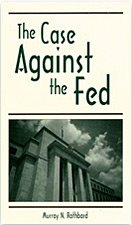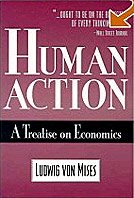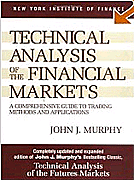London Telegraph notes Citigroup's concurrence with GATA
In Monday's edition of The Telegraph in London, Ambrose Evans-Pritchard notes that Citigroup's new gold market research report concurs with GATA's complaint that Western central banks have been suppressing the price of gold.
Dollar Crunch Puts Gold Centre Stage
By Ambrose Evans-Pritchard
The Telegraph, London
Monday, October 1, 2007
The dominoes are toppling. What began as a credit crunch has turned into a dollar crunch. We are witnessing a run on the world's paramount reserve currency, an event that occurs twice a century or so, and never with a benign outcome.
The US dollar has fallen through parity against the Canadian dollar and plummeted to all-time lows against a basket of currencies. This is dangerous. None of the mature economic blocs seems able to take the strain, let alone step in to restore order.
Ultimately, Europe and Japan are in worse shape than the US. A mood of "sauve qui peut" is taking hold.
Is this what gold is sniffing as it breaks out against all currencies, smashing through 500 euros an ounce against the euro, and vaulting to a 28-year high of $743 against the dollar?
"Central banks have been forced to choose between global recession or sacrificing control of gold, and have chosen the perceived lesser of two evils," said Citigroup in a fresh report. "We believe that the policy resolution to the credit crunch will take the form of a massive, extended 'Reflationary Rescue,' in a new cycle of global credit creation and competititive currency devaluations. This could take gold to $1,000 an ounce or higher."
The report's authors, John Hill and Graham Wark, say the avalanche of central bank bullion sales earlier this year was "clearly timed to cap the gold price."
They do not explain this explosive allegation, long promoted by the gold group GATA. But it would not surprise me if the European Central Bank's motive for selling 37 tonnes in April and May was to hold the euro price of gold below E500.
Citigroup said the game was up once the Federal Reserve slashed rates a half point and opened the liquidity floodgates.
Talk of "competitive devaluations" is a new twist. Gold bugs often prattle about the dollar's demise -- condign punishment for a country that has amassed $3 trillion of net liabilities abroad, slashed its savings rate below zero, and spent itself into a debtor's gaol -- but they rarely ask what currency it is supposed to collapse against.
China is a leveraged play on US shopping malls. Japan is already buckling. Its economy contracted 0.3 percent in Q2. Wages have fallen for eight months in a row. The Abe government has fallen -- the first sub-prime victim, but not the last.
Until now, the euro has served as the "anti-dollar," the default choice for Asians and petrodollar powers wary of US assets. This cannot last.
A rate of $1.43 (it was 83 cents in 2000) will combine, after a one-year lag, with deflating property bubbles in the Club Med bloc to cause a crisis in 2008. It will then become clear that the needs of the Germanic and Latin zones are incompatible and that a coin with no treasury, debt union, or polity to back it up cannot displace the dollar -- if it survives at all.
Airbus is already underwater, unable to meet its dollar contracts unless it shifts plant from Europe. Every 10-cent rise in the euro costs E1 billion.
French President Nicolas Sarkozy is in guerrilla warfare against the European Central Bank, threatening to invoke Maastricht Article 109, which gives European Union politicians power to set a fixed exchange rate (by unanimity) or a "dirty float" (by majority).
The mood is moving his way. Eurogroup chair Jean-Claude Juncker has stopped pretending that all is well. "We have begun to have great concern about the exchange rate of the euro," he said.
Europe will not let America export its day of reckoning to the rest of the world. It will counter with its own devaluation.
No doubt Ben Bernanke will use all means to avert disaster, including the "printing press" he invoked in November 2002. By this he meant that the Fed could inject unlimited stimulus by purchasing as many bonds and assets as it wants. He believes the Fed could have avoided the Depression if it had been more creative in 1931.
Even so, I am not sure that the Bernanke Fed will move fast enough, given fears of moral hazard, or, indeed, whether the rate cuts on offer are enough to head off an insolvency crisis. The chart of S&P 500 looks eerily similar to October 1987, the last time a tumbling US dollar set off a crash.
A Bundesbank rate rise was the trigger then. If the ECB's hawks are pig-headed enough to ram through one last rise on October 4 we might see a replay.
Large parts of the global credit system are still shut. The $2.2 trillion market for commercial paper has shrunk by $368 billion over the past seven weeks as lenders refuse to roll over loans. The $2.5 trillion market for "structured finance" remains frozen.
US sales of new houses are down 21 percent in a year. Median prices have fallen 14 percent since March to $225,700. Builders are having to slash tariffs to move stock at all.
We wait to see what happens as "teaser rates" on some $1.5 trillion of mortgages jump with a venomous kick in coming months. The Fed should have thought about this three years ago when rates were 1 percent. It is too late now.
How do you play gold rally?
Citigroup says the mining shares are poised to surge after lagging badly, offering a "gold beta" leverage of 2.36. "The market is likely to be shocked at how much cash the major golds generate at $700 an ounce," Citigroup said.
It certainly looks as if gold has at last "decoupled" from the stock markets, regaining its role as the ultimate store of value. Whether the mining equities have decoupled is another matter.
If Wall Street takes a beating this autumn, the safest play is pure metal.
* * *
The Telegraph, London
Monday, October 1, 2007
The dominoes are toppling. What began as a credit crunch has turned into a dollar crunch. We are witnessing a run on the world's paramount reserve currency, an event that occurs twice a century or so, and never with a benign outcome.
The US dollar has fallen through parity against the Canadian dollar and plummeted to all-time lows against a basket of currencies. This is dangerous. None of the mature economic blocs seems able to take the strain, let alone step in to restore order.
Ultimately, Europe and Japan are in worse shape than the US. A mood of "sauve qui peut" is taking hold.
Is this what gold is sniffing as it breaks out against all currencies, smashing through 500 euros an ounce against the euro, and vaulting to a 28-year high of $743 against the dollar?
"Central banks have been forced to choose between global recession or sacrificing control of gold, and have chosen the perceived lesser of two evils," said Citigroup in a fresh report. "We believe that the policy resolution to the credit crunch will take the form of a massive, extended 'Reflationary Rescue,' in a new cycle of global credit creation and competititive currency devaluations. This could take gold to $1,000 an ounce or higher."
The report's authors, John Hill and Graham Wark, say the avalanche of central bank bullion sales earlier this year was "clearly timed to cap the gold price."
They do not explain this explosive allegation, long promoted by the gold group GATA. But it would not surprise me if the European Central Bank's motive for selling 37 tonnes in April and May was to hold the euro price of gold below E500.
Citigroup said the game was up once the Federal Reserve slashed rates a half point and opened the liquidity floodgates.
Talk of "competitive devaluations" is a new twist. Gold bugs often prattle about the dollar's demise -- condign punishment for a country that has amassed $3 trillion of net liabilities abroad, slashed its savings rate below zero, and spent itself into a debtor's gaol -- but they rarely ask what currency it is supposed to collapse against.
China is a leveraged play on US shopping malls. Japan is already buckling. Its economy contracted 0.3 percent in Q2. Wages have fallen for eight months in a row. The Abe government has fallen -- the first sub-prime victim, but not the last.
Until now, the euro has served as the "anti-dollar," the default choice for Asians and petrodollar powers wary of US assets. This cannot last.
A rate of $1.43 (it was 83 cents in 2000) will combine, after a one-year lag, with deflating property bubbles in the Club Med bloc to cause a crisis in 2008. It will then become clear that the needs of the Germanic and Latin zones are incompatible and that a coin with no treasury, debt union, or polity to back it up cannot displace the dollar -- if it survives at all.
Airbus is already underwater, unable to meet its dollar contracts unless it shifts plant from Europe. Every 10-cent rise in the euro costs E1 billion.
French President Nicolas Sarkozy is in guerrilla warfare against the European Central Bank, threatening to invoke Maastricht Article 109, which gives European Union politicians power to set a fixed exchange rate (by unanimity) or a "dirty float" (by majority).
The mood is moving his way. Eurogroup chair Jean-Claude Juncker has stopped pretending that all is well. "We have begun to have great concern about the exchange rate of the euro," he said.
Europe will not let America export its day of reckoning to the rest of the world. It will counter with its own devaluation.
No doubt Ben Bernanke will use all means to avert disaster, including the "printing press" he invoked in November 2002. By this he meant that the Fed could inject unlimited stimulus by purchasing as many bonds and assets as it wants. He believes the Fed could have avoided the Depression if it had been more creative in 1931.
Even so, I am not sure that the Bernanke Fed will move fast enough, given fears of moral hazard, or, indeed, whether the rate cuts on offer are enough to head off an insolvency crisis. The chart of S&P 500 looks eerily similar to October 1987, the last time a tumbling US dollar set off a crash.
A Bundesbank rate rise was the trigger then. If the ECB's hawks are pig-headed enough to ram through one last rise on October 4 we might see a replay.
Large parts of the global credit system are still shut. The $2.2 trillion market for commercial paper has shrunk by $368 billion over the past seven weeks as lenders refuse to roll over loans. The $2.5 trillion market for "structured finance" remains frozen.
US sales of new houses are down 21 percent in a year. Median prices have fallen 14 percent since March to $225,700. Builders are having to slash tariffs to move stock at all.
We wait to see what happens as "teaser rates" on some $1.5 trillion of mortgages jump with a venomous kick in coming months. The Fed should have thought about this three years ago when rates were 1 percent. It is too late now.
How do you play gold rally?
Citigroup says the mining shares are poised to surge after lagging badly, offering a "gold beta" leverage of 2.36. "The market is likely to be shocked at how much cash the major golds generate at $700 an ounce," Citigroup said.
It certainly looks as if gold has at last "decoupled" from the stock markets, regaining its role as the ultimate store of value. Whether the mining equities have decoupled is another matter.
If Wall Street takes a beating this autumn, the safest play is pure metal.
* * *
Labels: Ambrose Evans Pritchard, GATA, gold















![[Most Recent Quotes from www.kitco.com] [Most Recent Quotes from www.kitco.com]](http://www.kitco.com/images/live/t24_au_en_usoz_6.gif)
![[Most Recent Quotes from www.kitco.com] [Most Recent Quotes from www.kitco.com]](http://www.kitco.com/images/live/au_go_0030_ny.gif)
![[Most Recent Quotes from www.kitco.com] [Most Recent Quotes from www.kitco.com]](http://www.kitco.com/images/live/au_go_0365_ny.gif)
![[Most Recent Quotes from www.kitco.com] [Most Recent Quotes from www.kitco.com]](http://kitconet.com/charts/metals/silver/t24_ag_en_usoz_4.gif)

















0 ΣΧΟΛΙΑ (COMMENTS):
Post a Comment
<< Home